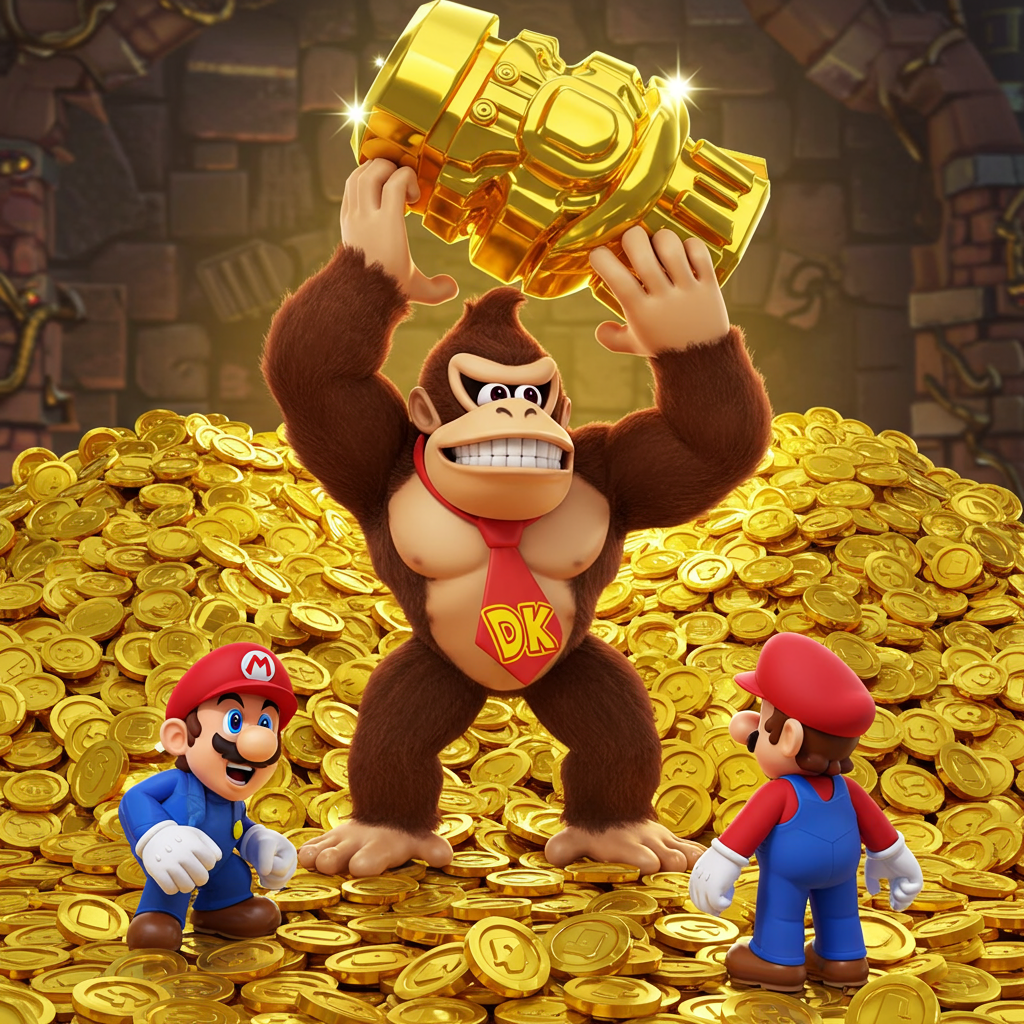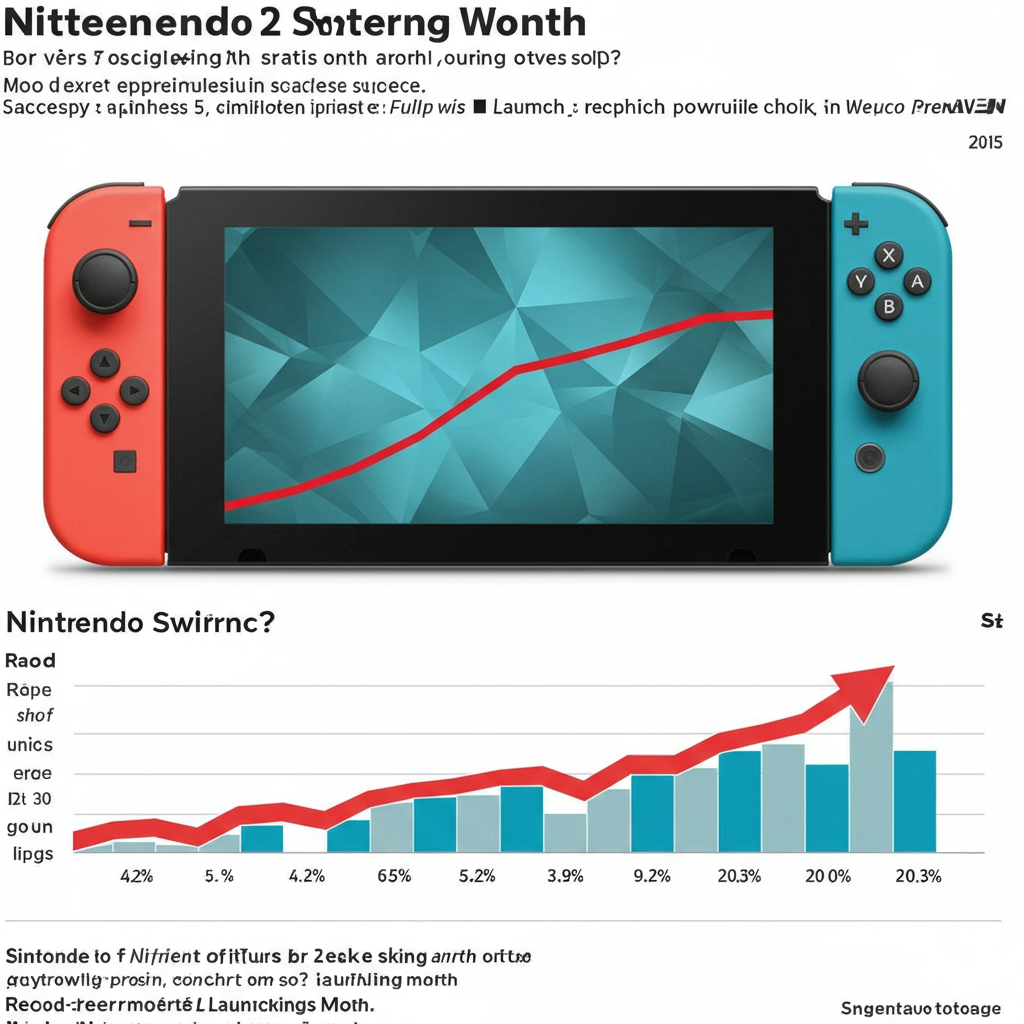The allure of shiny objects in video games is undeniable, yet how often does collecting them feel truly rewarding? For decades, Super Mario Bros. games have filled their worlds with ubiquitous gold coins, often leaving players wondering about their true value. But a new contender, Donkey Kong Bananza, is poised to flip the script, demonstrating that while in-game currency might remain functionally trivial, the act of collecting can be transformed into an exhilarating, chaotic, and deeply satisfying experience. This analysis dives into how Donkey Kong Bananza‘s unique approach to gold collection remedies a long-standing design flaw, offering a fresh perspective on player engagement in the digital age.
The Ubiquitous Gold: Super Mario’s Coin Conundrum
For countless players, Nintendo’s beloved plumber, Mario, has been synonymous with collecting gold coins. Yet, as many veteran gamers can attest, these shimmering disks often serve as little more than environmental filler. They might mark a path, reward a simple jump, or exist as a “door prize” for basic progression. The real collectibles in Mario’s world, the challenging “red coins” or star bits, are typically the ones tied to meaningful objectives, truly earning a player’s attention.
This “coinslop,” as some have dubbed it, reached its peak in titles like New Super Mario Bros. 2. Released in 2012 for the Nintendo 3DS, this game leaned heavily into an unprecedented abundance of gold. Levels were designed to overflow with currency. Players encountered gold enemies, pipes raining coins, and power-ups like the Golden Flower that transformed entire landscapes into a deluge of cash. While impressive in scale, this coin deluge often felt functionally empty. Collecting hundreds, even millions, of these digital treasures frequently culminated in little more than an easily acquired, often unneeded, extra life. The core gameplay loop remained engaging, but the primary collectible lacked significant impact on player progress or the broader game economy.
Donkey Kong Bananza: A Primal Rush for Riches
Contrast this with the upcoming Donkey Kong Bananza, slated for release on the Nintendo Switch 2 on July 17, 2025. Developed by the acclaimed team behind Super Mario Odyssey, this 3D platformer introduces a radically different, and profoundly more engaging, method of acquiring in-game gold. From the very first moments, players are encouraged to unleash Donkey Kong’s formidable power, not just to progress, but to systematically tear apart the environment in a glorious, chaotic pursuit of currency.
Imagine digging 50-foot tunnels just to witness gleaming chunks erupt from ceilings. Picture yourself “popping stone zits” and bathing in their golden effluence. This tactile, destructive approach to Donkey Kong Bananza gold acquisition awakens a genuinely primal urge. It’s about beating gold from the ground, tearing it from walls, and then scooping up the cascading riches in a truly “hedonistic rush.” This isn’t passive collection; it’s an active, visceral engagement with the game world that feels inherently satisfying.
Even acknowledging that Donkey Kong Bananza‘s gold, much like Super Mario coins, might also lack ultimate, persistent utility, the experience fundamentally differs. Early layers of the game might see players amassing thousands of gold with minimal impact on long-term progress. Yet, the sheer joy derived from the act of collection transforms what could be a mundane task into a core gameplay loop. Nintendo appears to have learned that injecting “a lot more chaos” into the “little things” can significantly elevate player enjoyment.
Beyond the Glitter: Functional Collectibles and Next-Gen Immersion
While the focus on Donkey Kong Bananza gold collection for its own sake is a highlight, Donkey Kong Bananza also offers more functionally significant collectibles. “Banandium Gems,” for instance, serve as the primary collectible, unlocking skill points for new abilities, providing tangible progression. Similarly, “Banandium Chips” allow players to purchase outfits for Donkey Kong and Pauline, which, unlike some cosmetic items in other Nintendo titles, offer functional buffs like improved swimming or poison resistance.
The gold itself, despite its initial perceived pointlessness, also plays a crucial role in activating Donkey Kong’s powerful “Bananza” forms. These temporary transformations, such as the destructive Kong Bananza or the flight-granting Ostrich Bananza, are fueled by collected gold. This mechanic cunningly links the chaotic collection back to tangible, albeit temporary, in-game power, allowing players to “cheese” puzzles and overcome obstacles with immense force. It’s a clever design choice that rewards the player’s collecting impulse with immediate, gratifying impact.
The game’s arrival on the Nintendo Switch 2 also hints at deeper levels of immersion. The new console, which launched in June 2025, boasts enhanced “HD rumble” force feedback. As demonstrated in the Nintendo Switch 2 Welcome Tour, this advanced haptic technology can recreate incredibly precise sensations, even playing distinct musical notes purely through vibration. It’s plausible that this technology could be leveraged in Donkey Kong Bananza to further enhance the tactile satisfaction of tearing apart environments and unearthing gold, making the physical act of collection even more visceral and rewarding.
However, initial hands-on impressions of Donkey Kong Bananza on the Switch 2 did note some performance concerns, including frame rate stutters and occasional muddy textures, suggesting areas for optimization before the final release. Despite this, the game’s expansive levels, multi-solution puzzles (drawing inspiration from The Legend of Zelda: Tears of the Kingdom), and robust two-player co-op mode featuring Pauline suggest a rich and engaging experience that goes far beyond simple Nintendo collectibles hoarding.
Redefining Value: The Evolution of In-Game Collectibles
The shift seen in Donkey Kong Bananza‘s approach to gold highlights a significant evolution in game design philosophy. Historically, in-game currency and collectibles served straightforward purposes: increasing score, granting extra lives, or unlocking minor bonuses. While these functions remain, modern design increasingly emphasizes the player’s experience during the collection process itself. Games are moving beyond mere transactional rewards to embrace intrinsic satisfaction.
This means prioritizing the sensory feedback, the satisfying animations, and the sheer chaotic joy of interaction. Donkey Kong Bananza demonstrates that even if a collected item’s ultimate utility is limited, the journey of acquiring it can be profoundly impactful. It’s a powerful lesson for developers: sometimes, the most engaging rewards aren’t what you get, but how you feel while getting it. This re-prioritization promises a more immersive and genuinely fun future for in-game currency and collectibles across the industry.
Frequently Asked Questions
What makes Donkey Kong Bananza’s gold collection different from Super Mario coins?
While both Donkey Kong Bananza‘s gold and Super Mario Bros.’ coins often lack significant long-term utility, Donkey Kong Bananza distinguishes itself through the act of collection. Instead of simple jumps or enemy defeats, players actively demolish environments, tear down walls, and burst objects to unleash cascades of gold. This chaotic, tactile, and visceral process creates a “hedonistic rush” that makes collecting inherently fun and engaging, transforming a mundane task into a core, satisfying gameplay experience, even if the gold itself is easily acquired and spent.
What new features does Donkey Kong Bananza introduce on the Nintendo Switch 2?
Donkey Kong Bananza, launching on the Nintendo Switch 2 on July 17, 2025, leverages the new console’s capabilities. It features a complex moveset for Donkey Kong, encouraging exploration with multi-solution puzzles inspired by The Legend of Zelda: Tears of the Kingdom. It also introduces “Banandium Gems” for skill points and “Banandium Chips” for functional outfits. Gold collected fuels temporary “Bananza” power-ups, offering immediate, powerful utility. The game’s two-player co-op with Pauline offers a unique, simplified experience. While initial demos noted performance stutters, the game’s design is poised to utilize the Switch 2’s advanced features like the “HD rumble” for enhanced tactile feedback.
Are collectibles in Donkey Kong Bananza purely cosmetic, or do they offer functional benefits?
Donkey Kong Bananza offers a mix of collectible utility. While the primary “gold” currency often provides transient benefit (though it does power Donkey Kong’s temporary “Bananza” transformations, which offer significant in-game advantages), other collectibles have clear functional benefits. “Banandium Gems” directly unlock skill points for new abilities, enhancing Donkey Kong’s gameplay. Additionally, “Banandium Chips” can be exchanged for outfits for Donkey Kong and Pauline that provide practical buffs, such as improved swimming or resistance to environmental hazards, making them more than just cosmetic adornments.
References
- www.polygon.com
- www.9news.com.au
- www.polygon.com
- www.polygon.com
- <a href="https://www.nintendolife.com/news/2012/06/e32012newsupermariobros2trailergoesforgold”>www.nintendolife.com




